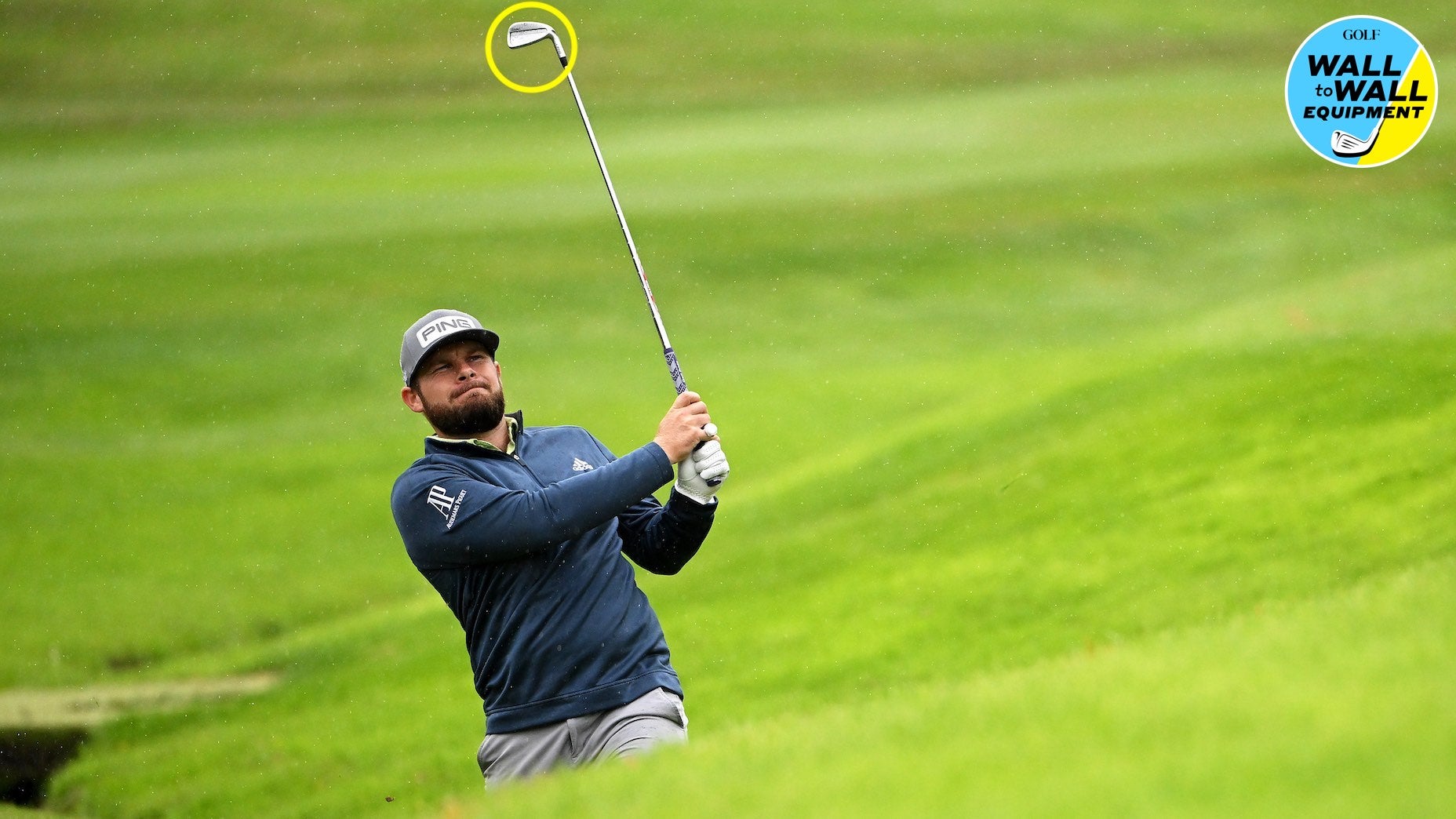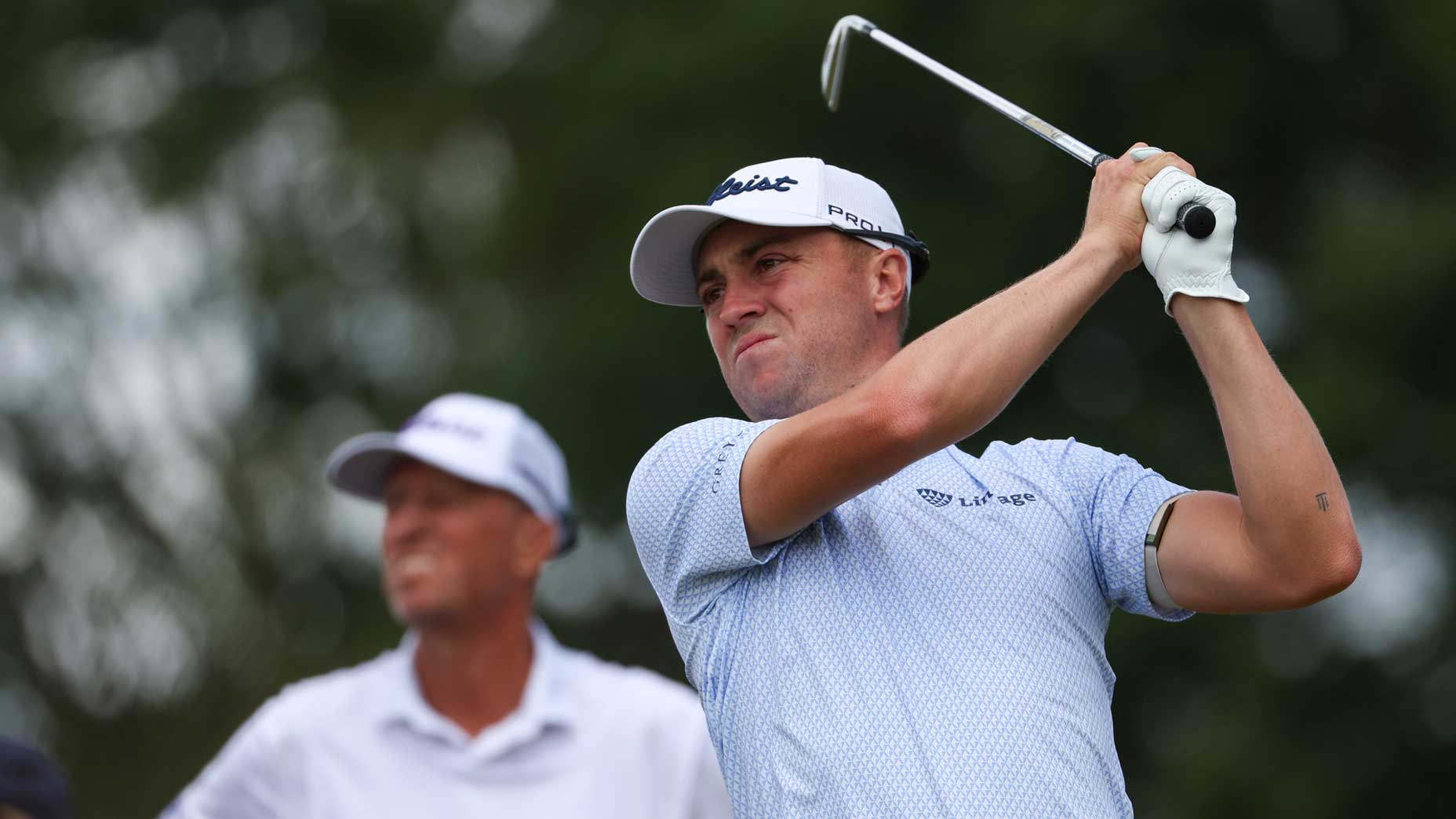It’s been just over one year since name, image and likeness legislation was enacted, giving college athletes the chance to engage in activities, including endorsement deals, leveraging social media for pay, and getting compensated for coaching, making personal appearances and signing autographs.
And the ramifications have been sweeping, perhaps the greatest throughout major revenue sports like football and basketball, but in college golf, as well.
USA Today’s Paul Myerberg wrote at length on the subject in a piece that debuted on Friday, noting that college athletics will be ultimately defined before and after the landmark. From his story:
A revolution has ensued.
What was expected to bring irreversible change to the long-standing amateur model has done exactly that and then some, shaking up the landscape to such an extreme degree that a timeline can be separated into the two distinct eras of before and after NIL.
With one year under our belts, let’s take a look at NIL, what’s worked and what hasn’t, and what it all means for the world of college golf.
Ingrid Lindblad, of Sweden, watches her ball off the sixth tee during the first round of the U.S. Women’s Open golf tournament at the Pine Needles Lodge & Golf Club in Southern Pines, N.C. on Thursday, June 2, 2022. (AP Photo/Steve Helber)
What’s gone wrong with NIL?
The NCAA has done little to govern the policy, giving the air of what Myerberg called “a Wild West-like atmosphere where NIL offerings have the potential to supersede more traditional selling points such as recent success and facilities.”
According to the story, third-party groups driven by donors have stepped into this power vacuum to amass large pools of money earmarked for NIL opportunities. Existing outside the watchful eyes of university compliance departments, these collectives have drawn attention for rubbing against the baseline principle that no NIL deal can include compensation for athletic performance.
“I don’t think anybody anticipated this concept around collectives. That’s where probably, at least among people I’m talking with, there’s concern over how they may or may not be operating,” said Jon Steinbrecher, the commissioner of the Mid-American Conference.
Current NIL rules have also left behind foreign student-athletes in the United States on an F1 visa, which allows for immigration as a full-time student but prohibits off-campus employment for all but specific situations.
That presented a peculiar situation during the year’s U.S. Women’s Open, when Ingrid Lindblad, the No. 2 amateur in the world, trailed by just one stroke after the opening round. While other collegians like Rose Zhang were decked out in NIL-issued gear during the event, Lindblad wore a Swedish national team polo and didn’t wear a hat on in her opening 6-under 65, the lowest round by an amateur in the history of the championship.
Golfweek’s Beth Ann Nichols explained that international student-athletes are restricted when it comes to NIL deals based on student visas. As the rules now stand, LSU coach Garrett Runion said Lindblad wasn’t allowed to earn money through NIL, though the school is doing everything they can to try to open up that possibility. International students risk losing their immigration status by taking NIL money.
Lindblad, a nine-time winner at LSU, played alongside the greatest player in the modern era, Annika Sorenstam, who was making her first LPGA major start in 14 years. It’s not unheard of for players without logos to pick up one overnight in a major championship when in the spotlight. Lindblad didn’t have that opportunity, even though she was still in contention until the final round, finishing in a tie for 11th place.
This week’s purse of $10 million was the largest in women’s golf history. The winner, Minjee Lee, earned $1.8 million. If Lindblad had turned pro coming into that week, she could’ve cashed in big.
When asked if she had any regrets, the LSU junior said, “When you say it, yeah … it would have been fun to win a little bit of money, but I think I’m going to stay in college for a little bit more.”
Only one amateur ever won the championship, Catherine Lacoste in 1967.

USA team members Rachel Heck, left, and Rose Zhang smile during a practice round at the 2022 Curtis Cup at Merion Golf Club in Ardmore, Pa. on Wednesday, June 8, 2022. (Chris Keane/USGA)
What’s gone right with NIL?
While some like Lindblad have been forced into an unfortunate loophole, Myerberg says that “the biggest impact of NIL is seen in the large deals signed by female athletes in non-revenue-generating sports; more so than any legislation this side of Title IX, NIL has created enormous gender equality where none previously existed.”
“What really doesn’t get covered is the female swimmer or female softball player that could never monetize their NIL, never monetize themselves, for the first time being able to profit,” said Max Forer, an attorney at Miller Nash and former Oregon offensive lineman.
According to the NIL company Opendorse, women’s basketball players have accounted for 15.7% of overall compensation paid out to all athletes. Athletes in women’s sports make up five of the top nine sports in overall NIL activity, according to a tracking of transactions conducted by Opendorse.
NIL has given athletics departments the opportunity to educate athletes on topics previously unaddressed in the college space. Athletes are learning about financial literacy, entrepreneurship and brand-building, Steinbrecher said.
“Or communication skills. To learn a little bit about the law, about contracts, about public relations, or media relations or social relations. Take your pick.”
And while college women’s golfers do have the ability to make money at the professional level, the additional revenue has helped to keep some of the top talent in college.
For example, Zhang and Rachel Heck are close friends who swap titles for the Stanford women’s golf team. And the duo has something else in common besides winning — both signed with Excel Sports Management for NIL representation.
Zhang, the No. 1-ranked amateur in the world and Golfweek’s top college golfer, joined Heck, the 2021 College Player of the Year, who signed with Excel last fall and counts Ping and Stifel among her growing number of partnerships.
Other examples, although perhaps not as shining, include the announcement that John Daly II had signed an NIL deal with Hooters. At the time, the son of two-time major champ John Daly had played just one college team tournament. And former NBA star J.R. Smith signed an NIL deal with Lululemon, a popular activewear brand. Smith became Lululemon’s first male golf ambassador. Smith is not able to wear Lululemon at NCAA-sanctioned events, but he can wear Lululemon in the company’s branded advertisements.

John Daly II and dad John Daly during the second round of the 2021 PNC Championship on Sunday, Dec. 19, 2021, in Orlando. (AP Photo/Scott Audette)
What’s next for NIL?
It will be interesting to see, Myerberg said, how companies handle NIL deals after gathering some data. Will they continue to sponsor secondary sports like golf, or will the focus turn solely on football and men’s basketball?
The ability for female athletes to gain traction in the NIL market, Myerberg explained, could lead to increased investments in women’s programs as universities see third-party interest.
“It does indicate the latent potential there,” said Tom McMillen, the president and CEO of LEAD1, an association representing the athletics directors and programs in the Football Bowl Subdivision. “The fact that women can go into this publicity rights market and do so well is a very good signal for the future. It can only mean that women’s sports are going to be more popular, and women are going to continue to be able to benefit off the monetization of their publicity rights. But it’s not going to happen overnight.
“What seems inevitable is NIL trickling down to high school athletes and athletics.”
Already, a total of 10 states allow high school athletes to profit off NIL. This evolution of NIL is the next great unknown in college — and perhaps all amateur — athletics.
“After this first year of people kind of getting their feet wet with it, trying to better understand it, I think over the next couple of years we’ll really see what the impact is moving forward,” said David Kmiecik, a senior recruiting manager for Next College Student Athlete, which provides guidance and support to prospective athletes and their families. “It is constantly changing and it’s constantly evolving. It’s going to be constantly evolving.”








